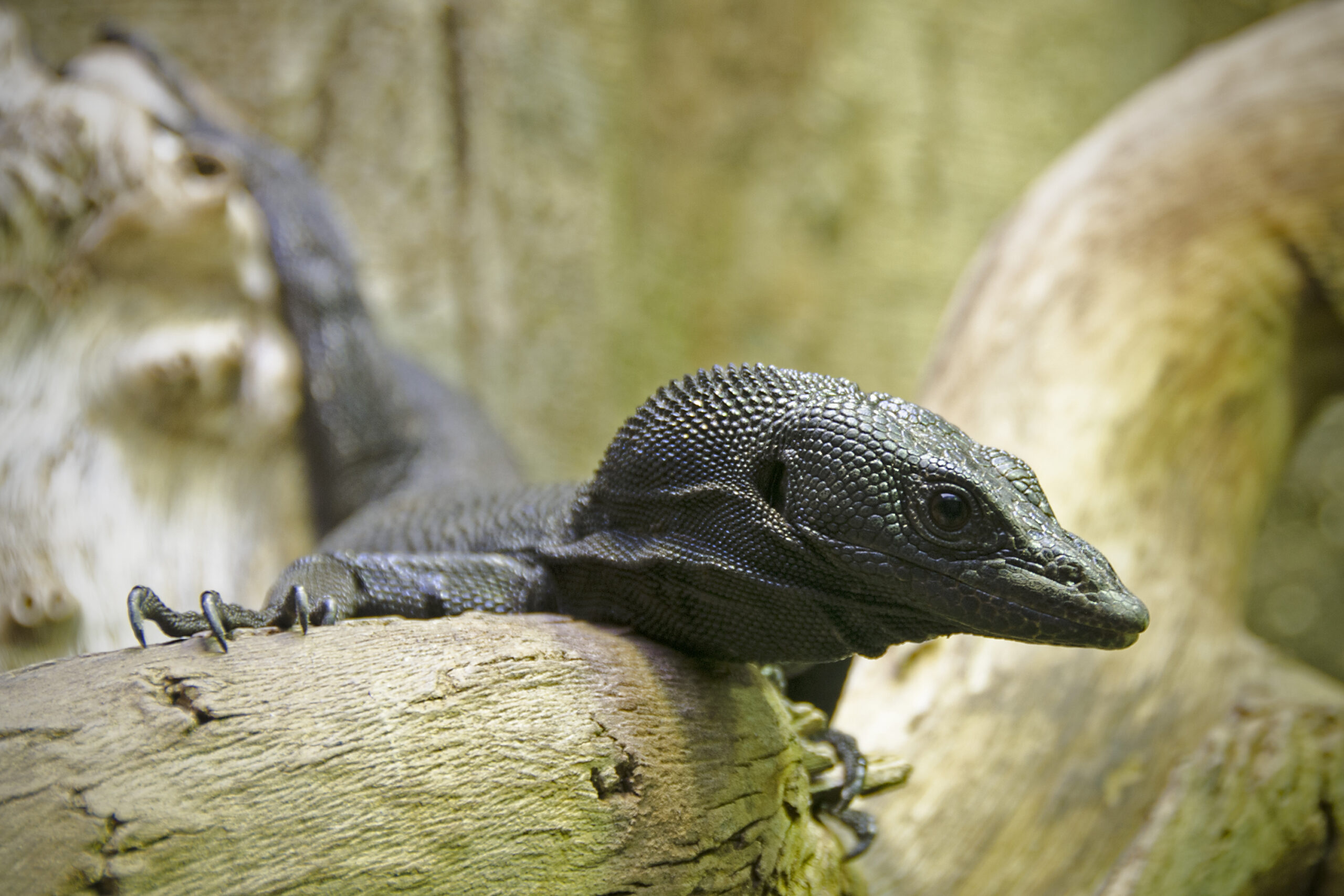Black Tree Monitor
*This page is under renovation and all information may not be up-to-date or complete*
Description
Black tree monitors have black scales, slender bodies and long tails that make up 2/3 of their body length. Juveniles of this species are gray in color with green and yellow spots that help them camouflage until they are about 12 weeks old. Their tails are prehensile, meaning they can be used to grab on to tree branches.
Male black tree monitors may be slightly larger than females. They also have larger heads and a more triangular base of their tail. Females have a rounder base of their tail.
Range & Habitat
As their name suggests, black tree monitors are arboreal. They live in the trees of tropical rainforests and mangrove swamps. They are only found on the Aru Islands of Indonesia, off the coast of New Guinea. This means they are an endemic species with a highly limited in geographic distribution.
Behavior
Female black tree monitors lay clutches of 3-7 eggs, often twice a year. She incubates her eggs for 164-165 days, hiding them in termite mounds, tree holes, or decaying logs. She defends hatchlings until they leave the group on their own.
Male monitors are solitary and may be territorial to other males. In territorial displays, males will stand up on their hind legs and attack each other. During breeding season, males will tolerate females within their range.
Diet
Black tree monitors are carnivores, feeding on small invertebrates, mammals, amphibians, and small birds or eggs.
Conservation
Black tree monitors are listed as Data Deficient by the International Union for the Conservation of Nature (IUCN). This means that we do not know enough about this species to determine if they are in danger of extinction.
The greatest threats to this species are habitat loss in their limited range and the exotic pet trade.
Fun Facts
- The black tree monitor may also be called Beccari’s monitor or the Aru Island monitor.

Scientific Name
Varanus beccarii
IUCN Conservation Status
Data Deficient
Size
3 – 4 feet long
Life Expectancy
10-15 years